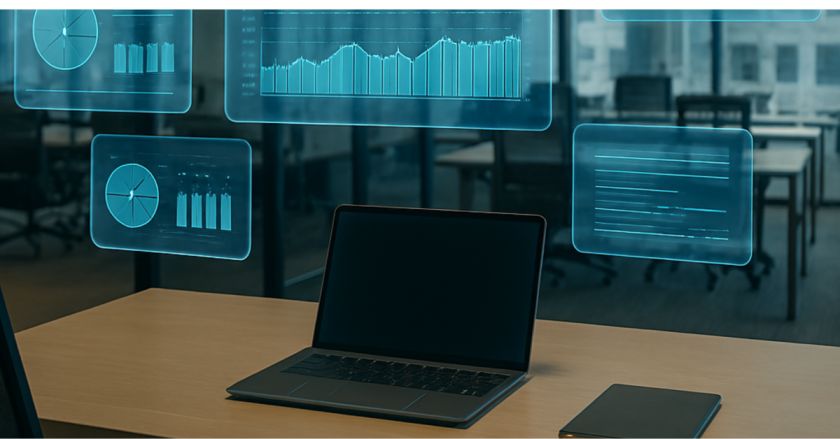Legal tech India is currently automating activities such as case auto-updates, legal research, enterprise solutions such as contract and litigation management, compliance and entity management suites for online dispute resolution, e-signature transactions, and others. The majority of these developments have been spurred by India’s start-up ecosystem, which is expanding at an exponential rate, particularly with the emergence of start-up incubators focusing on the legal technology industry.
What exactly is Legal Technology?
-
Legal technology is a subset of technology that provides legal services and assists legal tech companies. It usually refers to software rather than conventional technologies like computers, printers, and scanners since they are not exclusive to legal tech companies.
-
Much of this innovation is intended to help lawyers and law and technology firms work more effectively. This is accomplished through the use of legal software systems.
-
Legal tech India uses emerging technologies, such as artificial intelligence and blockchain technology, to provide better and more efficient legal services and help us deal with regulatory and compliance responsibilities more efficiently and effectively. Legal tech and regulatory innovation are all terms used to describe Legal Technology.
Legal Technology businesses and Categorises
Stanford Law School pioneered the many types of legal tech solutions available on the market today. The school creates an annual list of Legal Technology businesses and categorises them into nine categories based on their functions:
-
Analytics: Data analysis that provides better search results.
-
Compliance: It entails identifying hazards and implementing legal automation control and management systems.
-
Document legal automation: It entails creating documents and maintaining them automatically throughout their entire existence.
-
Legal education: Offering legal tech instruction in novel ways using technology
-
Legal research: This involves locating and gathering the facts required to reach a legal conclusion.
-
Platforms: It enables people to provide and receive legal services online.
-
Online dispute resolution: Online claim resolution
-
Management: Legal operations
-
E-discovery: It is the process of looking for, discovering, and obtaining digital evidence for use in court proceedings.
Trends to watch in the legal tech sector
Based on our industry experience and an examination of several papers and studies, such as the IBA Future of Legal Services Commission’s study, we determine that these are the ten most important trends to watch in the legal tech sector in 2025.
1. Significant growth in legal technology expenditures
The year 2021 marked a watershed moment in the evolution of legal technology solutions. These solutions have made a major difference in how we operate. More specifically, judicial operations departments have grown exponentially in complexity, introducing new benefits to the production process.
2. Invest in solutions that automate legal document management.
A large portion of a lawyer’s work is spent creating, analysing, and managing legal papers. According to a McKinsey & Company report, 25% of this time may be automated with the correct legal IT solutions. As a result, when it comes to seeking improved efficiency in the industry, this represents one of our primary responsibilities.
3. Information security
The epidemic has resulted in an alarming surge of cyberattacks. According to Deloitte’s Future Trends for Legal Services research, “an increasing number of customers want businesses that provide legal assistance on digital concerns, data protection, and cybersecurity.” As a result, understanding cybersecurity will be critical in 2022. On the other hand, lawyers have access to and manage sensitive data pertaining to their clients.
4. Cloud-based data storage
This is not a new trend; we’ve seen this device throughout the years. Having stated that, we must note its broad adoption as a trend for 2022. This is due, in part, to the increased danger of cyberattacks on legal firms mentioned in the preceding paragraph. Cloud migration has many advantages.
5. Legal virtual assistants
This refers to smart bots that assist attorneys in doing everyday activities by automating specific operations. This technology enables teams to expand their operational capacity, decreasing the average response time of attorneys and resulting in significant service delivery efficiencies. This technology will mostly be used to react to simple and repeated actions.
6. Tools for managing digital identities: the electronic signature
In the past year, digital signatures have grown in popularity. The major driver of this was the epidemic since digital signatures enable greater security in distant operations, enhancing company productivity while decreasing expenses. This already-common technical instrument may take the form of a handwritten or biometric (digital fingerprint) signature. It stands out in the industry as a developing trend and solution.
7. Computerised intelligence
Artificial intelligence solutions help large companies and legal departments become more efficient by using algorithms that create patterns in data management. Its present use is mostly a support tool, allowing attorneys to automate their most routine procedures. The programme uses machine-learning algorithms to modify documents and collect data in certain circumstances. This enables attorneys to make informed judgments based on the data.
8. Increased spending on privacy technologies
The methods outlined in the European Data Protection Regulation and the California Consumer Privacy Act for submitting a claim on this topic lead us to predict that law and technology firms will invest in automating these processes via technology. This will enable organisations and businesses to comply with legislation and implement these new practices effectively.
9. Smart contracts and blockchain technology
Different blockchain networks will be integrated in 2022. Because of its ability to offer secure digital validation, this technology is very useful for our industry. It will not become widely used, but as a sector, we should keep an eye out for the rising number of enterprises that are using this technology.
10. Hiring individuals with mixed backgrounds
Another key legal IT trend that we can see—and that Gartner expects—is an improvement in the variety of profiles that legal departments will employ. The consultant needs to bridge this gap, which may be accomplished by creating and recruiting hybrid profiles.
The Following Elements Are Developing Technology In The Legal Support Market
- Costs: A high level of value is expected for legal expenses paid. The average spending on legal services by in-house departments has also come under increased scrutiny.
- Compelled technology: The legal industry has been reluctant to innovate, but it has been compelled to do so due to the advent of legal technology, which has commoditised many legal solutions.
- Authorities’ scrutiny: In many countries, regulators have grown quite rigorous in monitoring attorneys to ensure they are not being exploited as conduits by unlawful businesses.
Legal professionals’ efficiency and productivity have grown due to innovation, and data to organise future operational strategies is now available.
Relevance of technology in law
The relevance of technology may be divided into five categories:
- Geographical Expansion: Technology has enabled legal tech firms to go worldwide. Some legal services have been commoditised, allowing them to be provided across borders. Where the legal system is consistent across countries, a consumer may choose a place from a menu and obtain a simple contract. As a result, legal firms that have embraced technology have expanded their market share, and technology is propelling their expansion.
- Better Clarity: Legal technology has introduced transparency to a previously opaque sector. Clients may now see the status of their case, fees, and other essential information. This customer-focused attitude bodes well for the sector.
- Better Resource Allocation: With legal technology, human capital may be redeployed to jobs that have a larger effect on learning and customer interactions. Paralegals, for example, may spend additional time on legal study, in judicial sessions where they might learn, or meeting clients rather than focusing on repetitive document management.
- Time management and faster processing: When used correctly, technology is faster and more accurate than the most skilled human worker.AI technologies can provide research findings in milliseconds and evaluate documents in milliseconds.
- Meetings at a distance: Virtual encounters between legal practitioners and their clients were formerly rare. The notion of attorneys connecting with clients through video conferencing grew in popularity as the social distance became more prominent.





